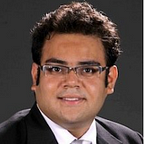Uber/Ola — from transactions to relations
Enough and more has been written about ride-hailing apps Uber/Ola/Lyft et all and how they enjoy massive benefits of network effects and thus can potentially be a winner takes all market.
The battleground has been extended to China and India, where the growing mobile penetration and favorable demographic means the demand potential is very high. Thus the entire focus for Uber & Ola has been on strengthening its suppliers (driver) base.
Both are doling out monetary incentives such as:
- Bonus structure: Define peak hours on daily basis, given riders incentives for completing a certain number of riders during the peak hours. For e.g. 8 rides — Rs 4500, 10 rides — Rs 5200 etc. Companies are trying to give different structures to different drivers to see what sticks. Some get peak hours targets, some get 24 hour targets etc.
- Car leasing: Can’t afford a car, we will help you lease it. Pay 30k as one-time and then start driving Uber/Ola. Ensures exclusivity of driver to the platform.
- Fast payment transfers: Uber does weekly transfers, Ola I am not sure but is slightly longer period. Faster transfers mean less working capital requirement for driver, hence better cash-flows.
- Referral Bonus: Best way to seek more drivers is via word of mouth of existing drivers on the platform (provided they are happy). Top it up with referral bonus and referrals increase.
Existing supply in big cities is almost exhausted. Most drivers have become ‘Dual Appers’ (use both Ola/Uber) and decide based on daily incentives. Additional supply is being created by partnering with skill development institutes, tapping into ex-army association etc.
While building supply is important, it is even more important to sustain the already existing partners. But somewhere in this mad rush of getting more supply, the focus on the human element has gone down. Here are a few thoughts on building long term sustainable relationships rather than short term completely transactional arrangements.
What do drivers or almost anyone care about:
- Kids’ Education: Every Uber/Ola ride I take, I ask drivers about their families and most drivers say — ‘Sahab bachhon ke liye to kar rahe hain’ (we are doing it for the kids). We are a society that puts emphasis on kids, their education etc. Most schools have seats reserved for EWS section. There are multiple NGOs running low cost schools. Uber/Ola facilitate connections between drivers and these agencies. I am not asking them to open schools, just bridge the information gap.
- Health: Lots of NGOs give free of cost primary care facilities to poor section of the society. Why not help the drivers and their families discover these services. Again think information and support and not infrastructure.
- Driver Hubs: Some sort of re-creation centres where drivers and their families can enjoy games, meet other folks and feel a sense of community. Will help bring in more stability and sense of family. Aggarwal Packers do this for drivers on the highways.
- Skill development: English-learning classes and other skill-building sessions may help in enriching the life of drivers and their kins. Can also be seen as post-retirement (from driving) option by drivers.
In this hyper-competitive, throw money at problems scenario maybe the human element will tilt the balance!
